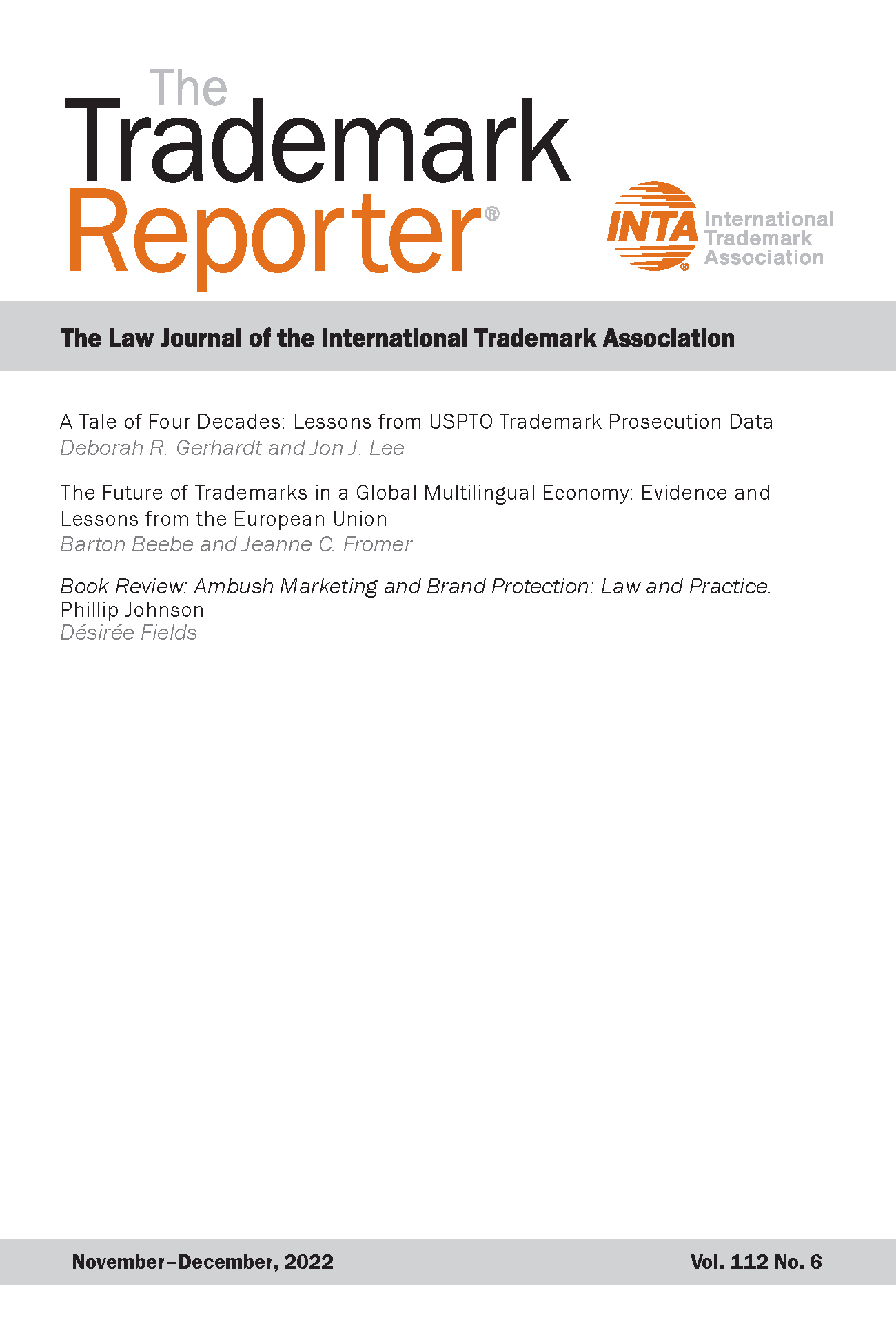The Future of Trademarks in a Global Multilingual Economy
Barton Beebe, Jeanne Fromer
Companies around the world are increasingly pursuing global branding strategies in which they seek to use the same trademark in all of the national or regional markets in which they sell their goods. To that end, such companies typically attempt to register the same mark in each of the trademark offices associated with those markets. The result is that the various national and regional trademark systems of the world are integrating into a de facto global trademark system.

Substantial proportions of trademark office registries intersect with other offices’ registries. Though trademark law and individual trademark registrations typically remain delimited by national borders, trademarks themselves are increasingly transnational, even global, entities.
The emergence of a global trademark system presents significant challenges to companies seeking to develop new brand names. They are facing mounting difficulties finding brand names that will be effective throughout the global marketplace, including in every one of its many languages, but that have not yet been claimed by another entity somewhere in that marketplace. The problem is that transnational market integration decreases the supply of marks at the same time that it increases the demand for competitively effective trademarks. On the supply side, as a market integrates, the number of trademarks that are effective in that market declines. To be effective throughout the market, a mark must be effective in each of the languages and cultures of which the market is composed; it must lie within the narrow intersection of the various sets of marks that are viable in each national submarket. Thus, for example, Microsoft would prefer that its Internet search engine not be known as BING in China, because BING may be understood to mean “sickness” in Mandarin. Especially attractive in a global multilingual trademark system are what we call “multilanguage words,” that is, cognates or loan words that are the same or closely similar in multiple languages (such as “fantastic,” “idea,” or “virus”). Because these words can be understood by people across jurisdictions and languages, it is easy to see how businesses can find them desirable as trademarks, but the supply of them is extraordinarily limited.
